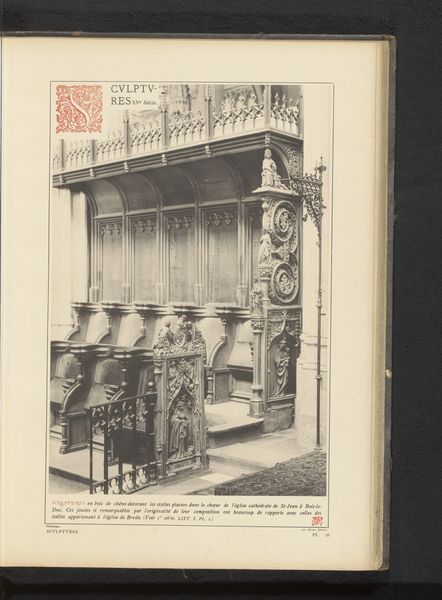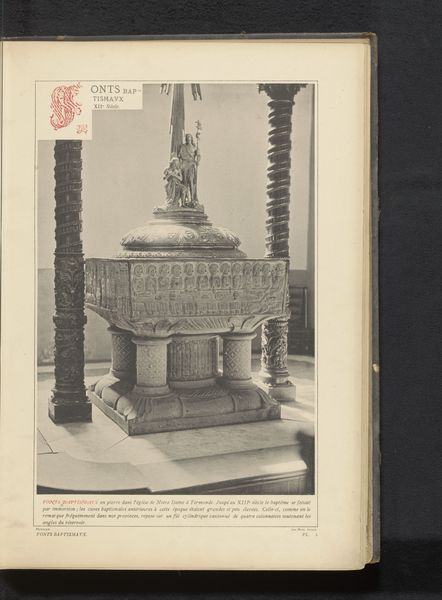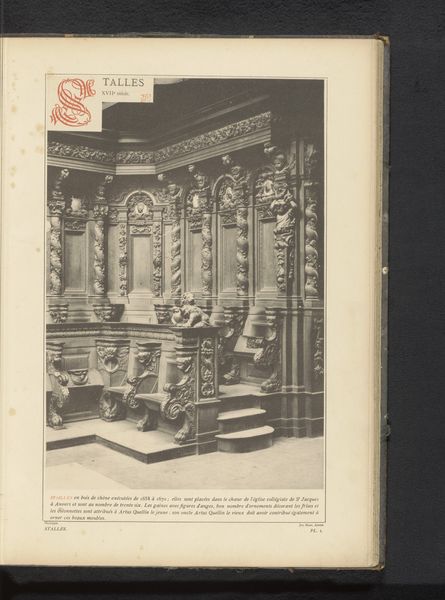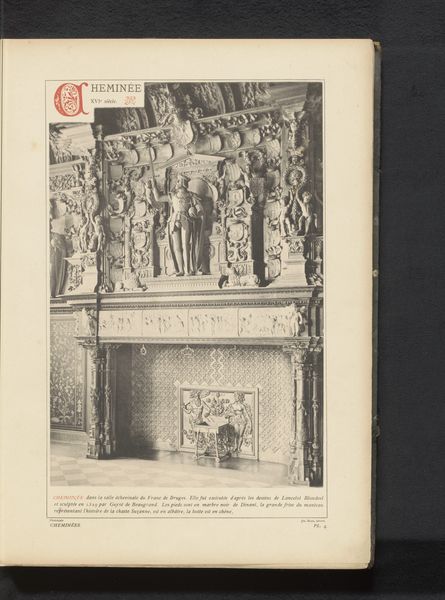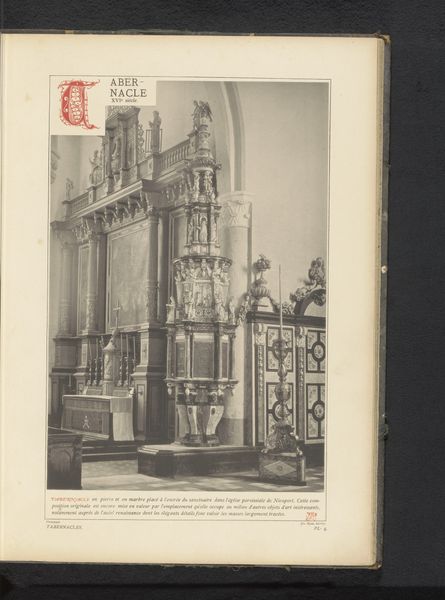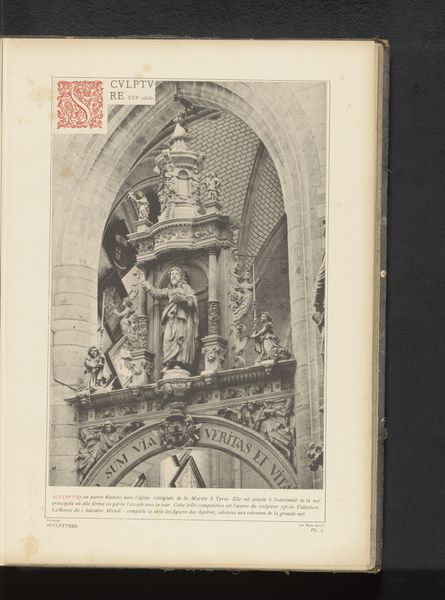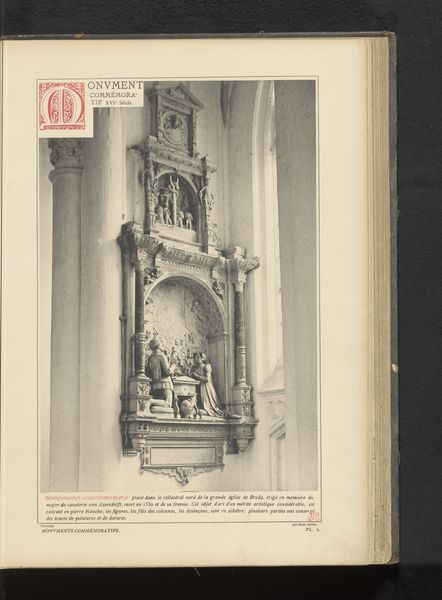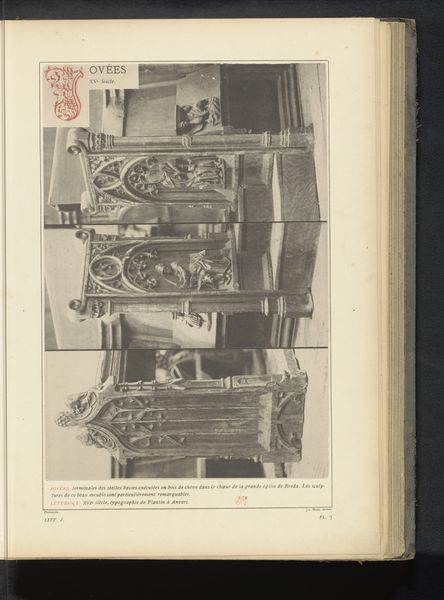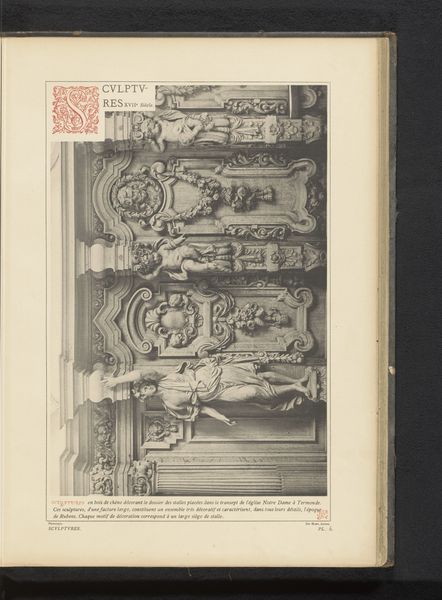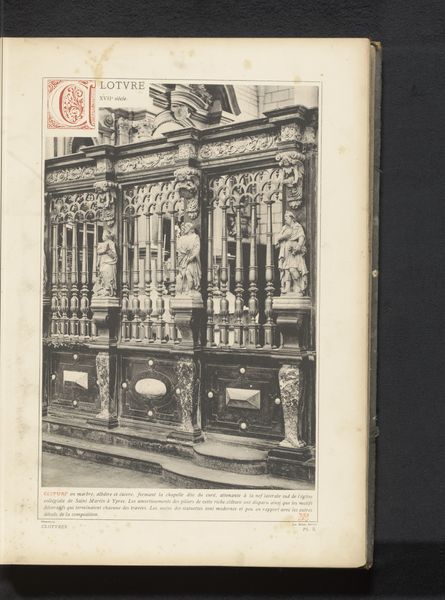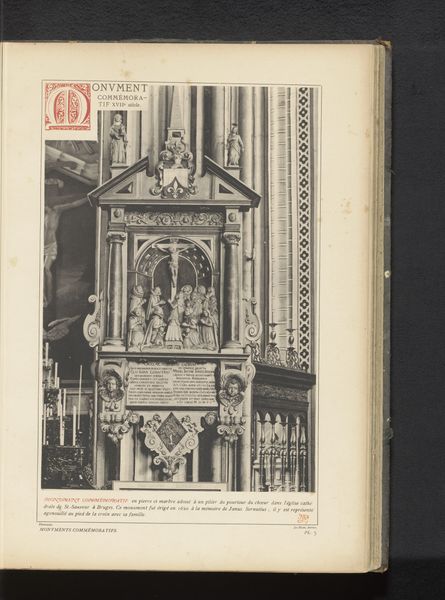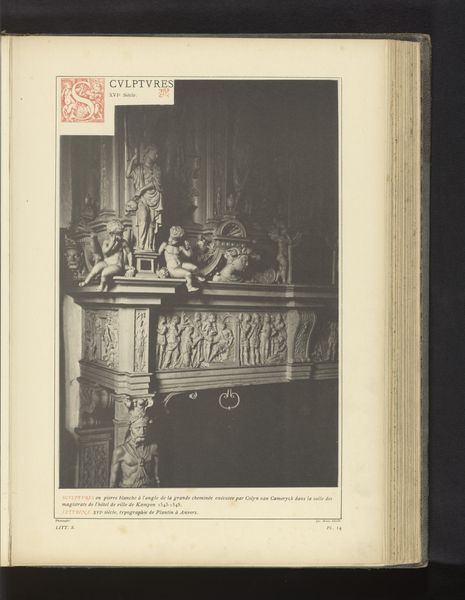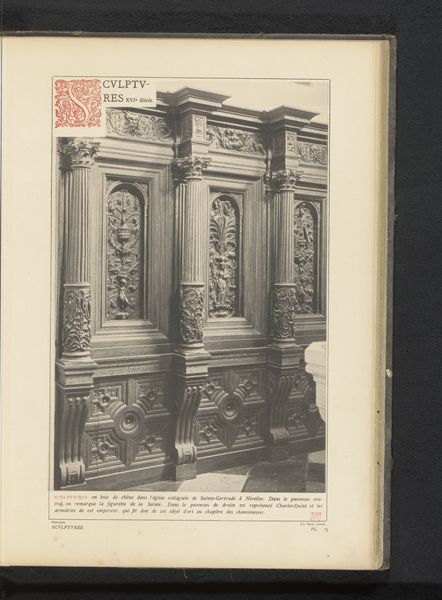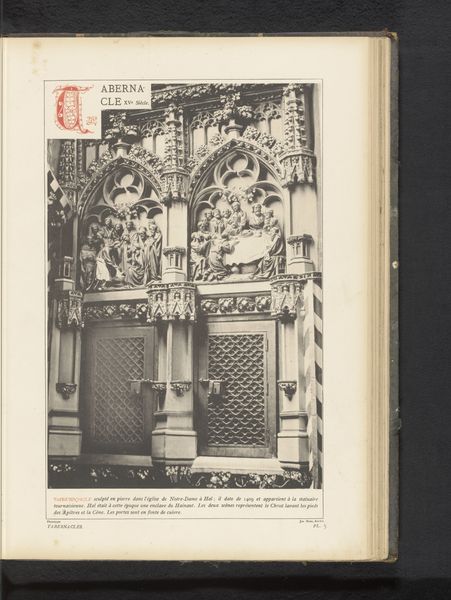
carving, print, wood, architecture
#
medieval
#
carving
# print
#
wood
#
architecture
Dimensions: height 337 mm, width 229 mm
Copyright: Rijks Museum: Open Domain
Curator: Oh, my goodness, look at this! It feels like stepping back into some grand, old dream. The sheer scale and detail... it’s overwhelming in the best possible way. A little like entering a stage set for a rather intense medieval drama. What do you see in it? Editor: This image shows a print titled "Koorgestoelte in de Onze-Lieve-Vrouwekerk te Vilvoorde", or "Choir stalls in the Church of Our Lady in Vilvoorde". It predates 1881 and depicts a choir stall, likely wood, potentially with some additional architectural elements. These stalls hold significance as they represent the power and authority of the church during that era. Curator: Absolutely! The texture of the wood, or at least the impression of wood from the print, looks almost alive, as if it’s grown organically over centuries. Do you think this sort of monumental church carving could serve more than just religious function? Does it reach into the political and social space? Editor: Unquestionably. Think about the historical context. Back then, the Church had influence not just over spiritual lives, but wielded social control. Pieces like this demonstrated and reinforced their dominance. The elaborate designs of the stalls acted almost like propaganda, asserting religious power through artistry. Curator: A carefully crafted symbol! Now I can't help but see all the sculpted faces as frozen figures staring down through the ages, each whispering its version of history into the silent church. Editor: They project a visual and social message. Consider who commissioned the work. Probably wealthy patrons and clergymen. Their status is permanently displayed in this church architecture, where power is visualized through expensive carving. It is intriguing how even now these stalls evoke similar sensations, albeit filtered through the lens of a photographic image. Curator: Yes! It reminds me that places and images can hold history that changes over time, adapting to our shifting interpretations. Editor: Indeed. Viewing "Koorgestoelte in de Onze-Lieve-Vrouwekerk te Vilvoorde" encourages reflection on faith, patronage, and societal control—all etched into wood and time.
Comments
No comments
Be the first to comment and join the conversation on the ultimate creative platform.
